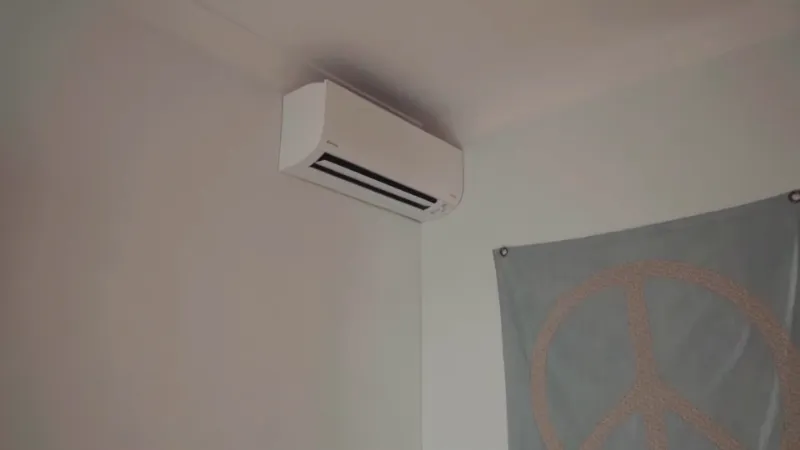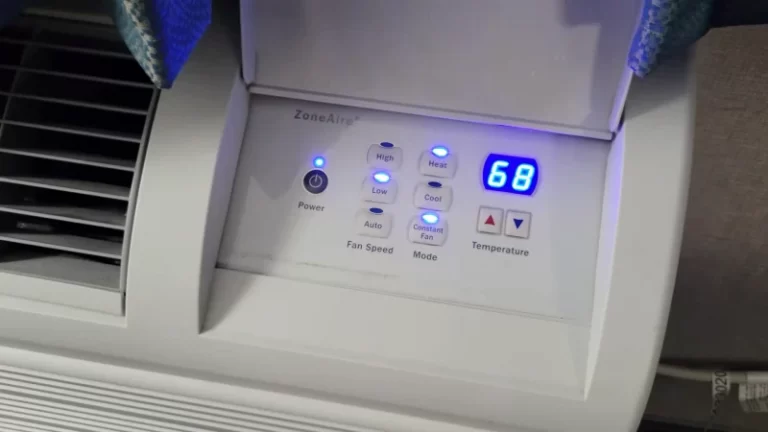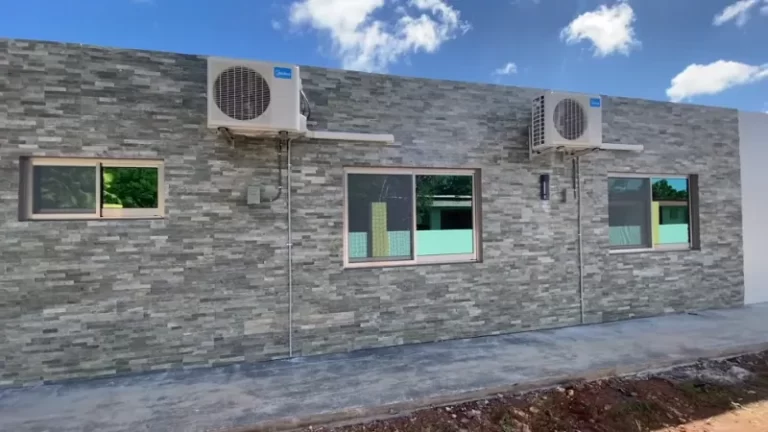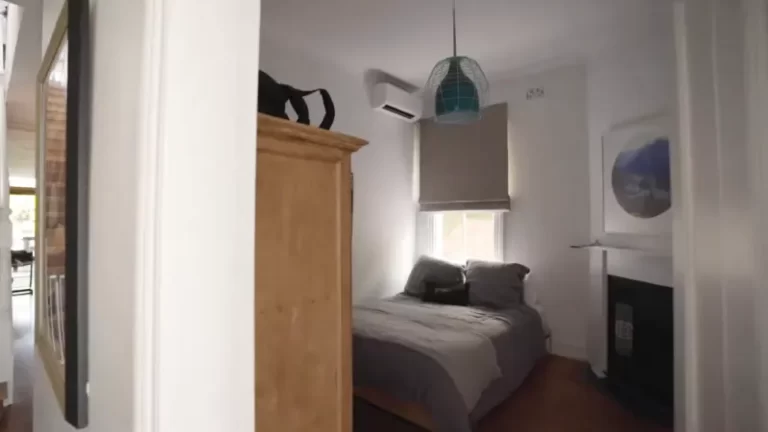Can You Turn an Air Conditioner on Its Side? Risks and Precautions Explained
Air conditioners are a crucial part of any comfortable living or working space, especially during the hot summer months. However, moving or storing an air conditioner can be a tricky task, and there may be situations where you might consider turning your unit on its side to fit through tight spaces or during transportation.
While it may seem like a harmless move, turning an air conditioner on its side can cause significant damage to the unit, leading to costly repairs or even the need to replace the entire unit. Therefore, it is important to understand whether it is safe to turn your air conditioner on its side and what precautions to take to prevent any damage to your unit.
In this blog, we will explore the topic of whether you can turn an air conditioner on its side and what you need to know to keep your unit in good condition.
You'll Learn About
Can You Turn an Air Conditioner on Its Side?
The answer to whether you can turn an air conditioner on its side depends on the type of air conditioner you are dealing with. Window air conditioners and central air conditioning units should never be turned on their side as they are designed to be used in an upright position only.
If you have a portable air conditioner, you may be able to lay it on its side temporarily, but only if it is done correctly and with caution. The first thing to keep in mind is that the unit must be turned off and unplugged before you attempt to move it in any way.
If you need to move your portable air conditioner on its side for any reason, it is important to do so carefully and securely. You should ensure that the unit is properly secured and that the window or door is locked shut before turning the unit on its side. Once the unit is on its side, it should not be moved or adjusted in any way.
It is also important to note that laying a portable air conditioner on its side for an extended period can cause damage to the unit. If the unit has been stored on its side or shipped that way, it should be turned to a horizontal orientation for at least 24 hours prior to running the unit. This allows sufficient time for any oils and lubricants to resettle back to their proper levels, providing protection for internal gears and moving parts.
In summary, while you may be able to temporarily lay a portable air conditioner on its side, it is not recommended to turn any type of air conditioner on its side for an extended period. It is always best to follow the manufacturer’s instructions and guidelines to ensure the safe and proper use of your air conditioning unit.

Why Air Conditioners Should Be Used in an Upright Position?
Air conditioners are designed to be used in an upright position, and for good reason. To understand why air conditioners should be used in an upright position, it is important to understand how they work.
Air conditioners operate by drawing in warm air from the room, passing it over a set of coils that are filled with a refrigerant, and then blowing cool air back into the room. The refrigerant absorbs the heat from the warm air and carries it outside, where it is released into the atmosphere.
When an air conditioner is turned on its side, the oil that lubricates the compressor can flow into the refrigerant lines, which can damage the compressor and cause it to fail. Additionally, the refrigerant lines are designed to be used in an upright position, and turning the unit on its side can cause refrigerant to flow back into the compressor, which can also damage the unit.
Furthermore, turning an air conditioner on its side can cause the refrigerant to become trapped in the wrong part of the system, which can result in poor performance or even total failure of the unit. It is also important to note that turning an air conditioner on its side can cause water to flow into areas of the unit where it is not meant to go, potentially causing water damage and corrosion.
In summary, air conditioners should be used in an upright position because turning them on their side can cause damage to the unit’s compressor, refrigerant lines, and overall performance. If you need to move or transport your air conditioner, it is important to take proper precautions to avoid turning it on its side.
This may include securing the unit in an upright position and using a dolly or other equipment to transport it. By following these guidelines, you can ensure that your air conditioner remains in good condition and functions efficiently for years to come.
Types of Air Conditioners
There are three main types of air conditioners: window air conditioners, central air conditioning units, and portable air conditioners. Each type has its own unique features and functions, and the rules for turning them on their side may vary depending on the type of unit.
Window Air Conditioners
Window air conditioners are designed to be installed in a window and are a popular choice for cooling individual rooms or small spaces. Because window air conditioners are designed to be installed upright, it is not recommended to turn them on their side. Doing so can cause damage to the compressor and refrigerant lines, which can result in poor performance or even total failure of the unit.
Central Air Conditioning Units
Central air conditioning units are typically installed in the attic or basement of a home and use a network of ducts to distribute cool air throughout the house. Because these units are typically installed by a professional HVAC technician, they are less likely to be moved or turned on their side. However, if you do need to move a central air conditioning unit, it is important to consult with a professional to ensure that it is done safely and correctly.
Portable Air Conditioners
Portable air conditioners are designed to be moved from room to room and are a popular choice for renters or those who do not want to install a permanent cooling system. While it is generally not recommended to turn a portable air conditioner on its side, the rules may vary depending on the specific model. Some portable air conditioners may be able to operate in a horizontal position, while others may require a period of time to settle in an upright position before being turned on.
The rules for turning an air conditioner on its side may vary depending on the type of unit. Window air conditioners should not be turned on their side, while central air conditioning units are typically installed in a fixed position and may require professional assistance to move.
Portable air conditioners may have different rules depending on the specific model, so it is important to consult the manufacturer’s instructions before attempting to turn the unit on its side. By understanding the unique features and requirements of each type of air conditioner, you can ensure that your cooling system remains in good condition and functions efficiently for years to come.
Can You Turn a Window Air Conditioner on Its Side?
Window air conditioners are not designed to be turned on their side, and doing so can cause significant damage to the unit. The reason for this is that window air conditioners rely on gravity to move certain liquids and gases through the system.
Liquids and Gases Can Move
If the unit is tilted, these liquids and gases can move to places where they shouldn’t be, leading to problems with the compressor, evaporator, and other components. Additionally, tilting the unit can cause oil to leak out of the compressor, leading to a complete breakdown of the unit.
If you need to move a window air conditioner, it is important to do so safely and without turning the unit on its side. One option is to remove the unit from the window and place it on a level surface, such as a table or countertop, with the bottom of the unit facing down. Another option is to slide a piece of cardboard or a furniture dolly under the unit and roll it to its new location.
Precautions You Should Take When Moving
It’s important to note that even if you don’t turn the unit on its side, there are still some precautions you should take when moving a window air conditioner. First, make sure the unit is properly secured and that the window is locked shut before attempting to move it.
Second, avoid jostling or shaking the unit during the move, as this can also cause damage to the internal components. Finally, allow the unit to sit in its new location for at least 24 hours before turning it on, to allow any oils and refrigerants to settle back into their proper positions.
Not Recommended
Turning a window air conditioner on its side is not recommended and can cause serious damage to the unit. If you need to move a window air conditioner, it’s important to do so safely and without tilting the unit. By following these tips, you can avoid costly repairs and keep your air conditioner running smoothly.
Can You Turn a Central Air Conditioning Unit on Its Side?
Central air conditioning units are large and complex systems that are designed to be installed and used in a specific way. Unlike portable and window air conditioners, central air conditioning units are not meant to be moved or adjusted in any way once they have been installed.
This means that turning a central air conditioning unit on its side is not recommended and can cause serious damage to the unit.
Side is Its Size and Weight
One of the main reasons why it is not possible to turn a central air conditioning unit on its side is its size and weight. Central air conditioning units are typically much larger and heavier than other types of air conditioners, and attempting to move them on their side can put the user at risk of injury.
Additionally, because of the complex system of ductwork and refrigerant lines that are required to operate a central air conditioning unit, turning it on its side can cause significant damage to these components and lead to costly repairs.
Installed as Part of a Larger Hvac System
Another reason why turning a central air conditioning unit on its side is not recommended is that these units are often installed as part of a larger HVAC system that includes a furnace or heat pump. Any changes or adjustments to the central air conditioning unit can disrupt the balance of the HVAC system and cause issues with its overall performance.
This can lead to higher energy bills, reduced comfort levels, and potentially even system failure.
If you need to move a central air conditioning unit, it is important to consult with a professional HVAC technician to ensure that the unit is moved safely and properly.
Attempting to move the unit on your own can be dangerous and result in serious damage to the unit, as well as potential injury to yourself or others. A qualified technician can provide guidance on the best way to move the unit without causing any damage to the system.
Can You Turn a Portable Air Conditioner on Its Side?
Portable air conditioners are designed to be mobile and can be moved from room to room to provide convenient cooling. However, there may be situations where you need to move the unit on its side, such as when storing it or transporting it to a new location. While it may be possible to turn a portable air conditioner on its side, caution should be taken to avoid damage to the unit.
Designed to Be Used in an Upright Position
Firstly, it is important to note that portable air conditioners are designed to be used in an upright position, and turning them on their side can cause issues with the internal components. The compressor, which is responsible for cooling the air, relies on lubrication to function properly.
Oil Can Leak Out
When the unit is turned on its side, the oil can leak out of the compressor and cause damage. In addition, the refrigerant lines and condenser can be damaged if they are bent or kinked.
Move a Portable Air Conditioner
If you need to move a portable air conditioner on its side, there are some steps you can take to minimize the risk of damage.
- First, make sure the unit is turned off and unplugged.
- Next, carefully lay the unit on its side, making sure to support it with pillows or blankets to prevent any unnecessary pressure on the components.
- Keep the unit on its side for no longer than 24 hours to prevent oil from leaking out of the compressor.
- When it is time to move the unit back to an upright position, make sure to do so slowly and carefully.
- Do not plug in the unit immediately; instead, wait at least 24 hours to allow the oil to settle back into the compressor.
- Before using the unit, make sure to check for any visible signs of damage, such as leaks or kinks in the refrigerant lines.
In summary, while it may be possible to turn a portable air conditioner on its side temporarily, it is important to take caution to avoid damaging the unit. Always make sure to turn off and unplug the unit before moving it, and take steps to support the unit and prevent pressure on the components. If possible, avoid turning the unit on its side altogether to prevent any potential damage.
Risks of Turning Air Conditioners on Their Side
Type of Air ConditionerRisks of Turning on SideWindow air conditionerCompressor damage, refrigerant leaks, motor failureCentral air conditionerSevere damage to the unit, risk of injury to the userPortable air conditionerTemporary damage to the compressor, potential refrigerant leaks
Note: It is not recommended to turn any type of air conditioner on its side. If you must move your unit, follow proper precautions and consult the manufacturer’s instructions.
Find out whether a 5000-watt generator can run an AC or not.
Frequently Asked Questions
Q1. Can turning an air conditioner on its side cause a refrigerant leak?
A: Yes, turning an air conditioner on its side can cause a refrigerant leak. Refrigerant is a liquid that is used to cool the air in an air conditioning unit, and it flows through the unit in a closed system. When an air conditioner is turned on its side, the refrigerant can flow into areas it is not supposed to, causing leaks and damage to the unit.
Q2. How long should you wait before turning on a portable air conditioner after moving it on its side?
A: After moving a portable air conditioner on its side, it is recommended that you wait at least 24 hours before turning it on. This allows the oil and refrigerant to settle back into their proper positions, preventing damage to the unit.
Q3. What should you do if you accidentally turn your window air conditioner on its side?
A: If you accidentally turn your window air conditioner on its side, turn it off immediately and wait at least 24 hours before turning it back on. This will allow the oil and refrigerant to settle back into their proper positions, preventing damage to the unit. If the unit does not work properly after waiting, it may need to be inspected by a professional.
Q4. Can a damaged air conditioning unit be repaired after being turned on its side?
A: In some cases, a damaged air conditioning unit can be repaired after being turned on its side. The extent of the damage will depend on the type of unit and how long it was on its side. It is recommended to have the unit inspected by a professional to determine the best course of action.
Q5. Is it ever safe to turn a central air conditioning unit on its side?
A: No, it is never safe to turn a central air conditioning unit on its side. Due to its size and complexity, attempting to turn a central air conditioning unit on its side can cause severe damage to the unit and put the user at risk. It is recommended to always consult a professional for any type of maintenance or repair for a central air conditioning unit.
Conclusion
Turning an air conditioner on its side can cause serious damage to the unit and is not recommended. Window air conditioners and central air conditioning units should never be turned on their sides, while portable air conditioners may be turned temporarily with caution.
It is important to always follow manufacturer guidelines for moving and transporting air conditioners and to take proper precautions to prevent damage. By keeping air conditioners in their upright positions and properly securing them during transportation, users can ensure their units remain in good working order for years to come.



